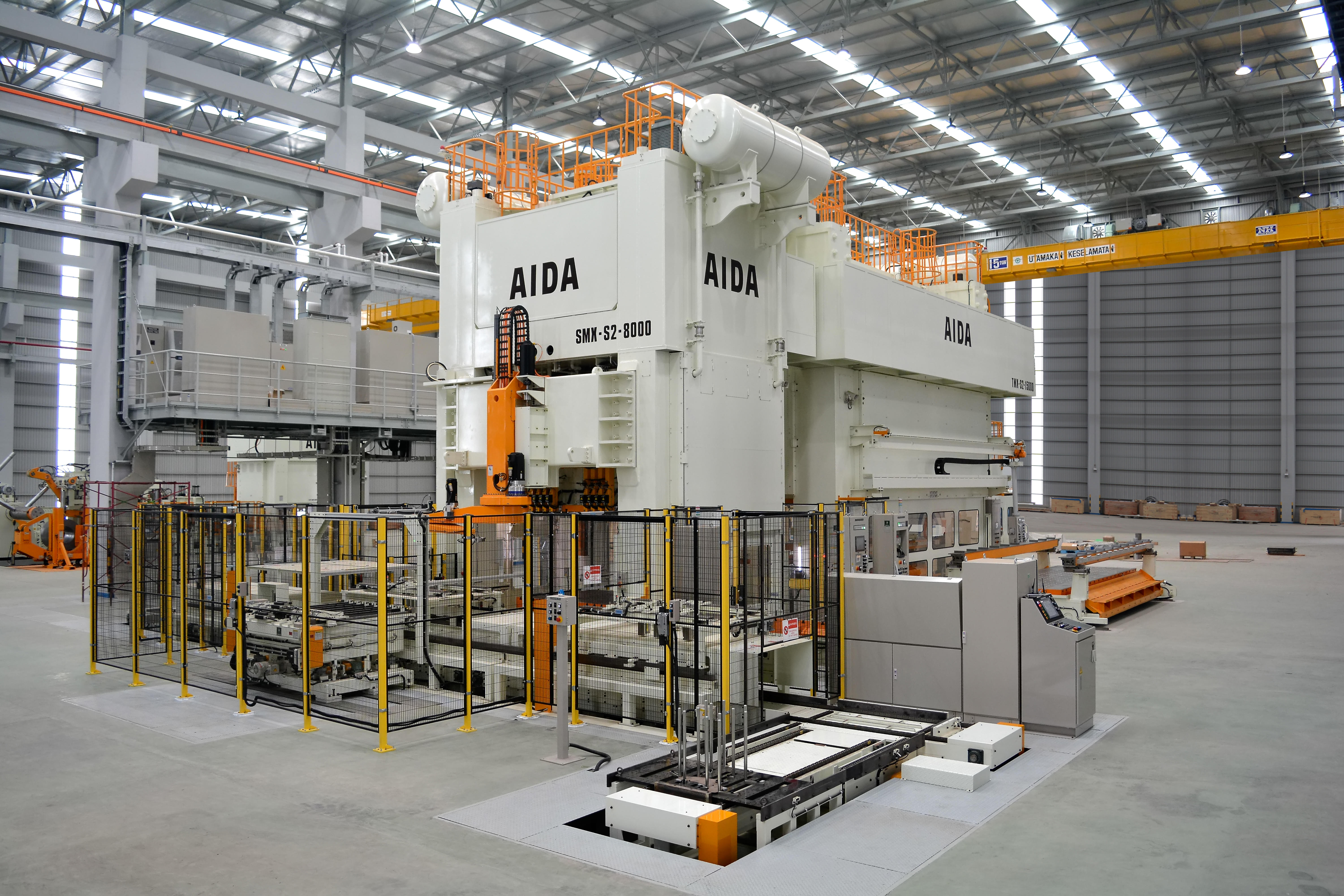These are links for moving within this page
- Text Size
-
- Standard
- Large
These are links for moving within this page
It is the main content from here.
Feb 19, 2020
This is to announce that AIDA's "High Speed Transfer Press Line for Forming High-Strength Materials" is a recipient of the "2019 Ten Greatest Innovations Prize (for Manufacturing)" (see Note 1) awarded annually for 62 years by Nikkan Kogyo Shimbun (Japan Business & Technology Daily News).
[Product Overview]
The press line consists of two mechanical presses--an 800-ton capacity 2-point SMX-S2-8000(2) and a 1500-ton capacity 2-point TMX-S2-15000(2) transfer press--and material is supplied to the line and transferred between the presses using AIDA's independently developed robots. The mechanical presses are synchronized to run in Continuous mode while keeping material conveyance time loss to the bare minimum, thereby enabling the high-precision and high-productivity forming of high-strength materials.
[Development Background]
When a single conventional transfer press is used to form products, a large forming load is applied at the 1st Stage, and this not only adversely affects the forming accuracy in subsequent stages and the life of the dies, it also requires a great deal of time to adjust the dies, etc. And these adverse effects are even more pronounced when forming hard and high-strength materials.
By performing the Stage 1 forming of a product on a separate press, it eliminates slide tipping issues at all the forming stages. Moreover, because two presses are utilized, the following technologies are being used to reduce conveyance times as much as possible.
Also, the independent 'Visual Centering System' corrects the positioning of the material while it is being conveyed.
[Development Successes]
① Stable product forming accuracy
② Easier die adjustments, reduced die wear, and improved durability of the press itself.
③ Enables a line takt time of 20 min-1, which rivals the productivity of a single transfer press or a servo tandem line.
④ 30% boost in the productivity of automotive parts formed from hard high-strength materials.
⑤ Because it is a mechanical press line, the initial investment is lower than a servo press line.
Aside from being recognized for achieving stable forming accuracy and significantly higher productivity, this line also received high praise as 'a concept that separates the forming processes of high-strength materials, thereby presenting a new direction for the near future,' and which 'exhibits great marketing potential because it neatly solves many die-related issues.'
(Note 1): This prize was first awarded in 1958 by the Nikkan Kogyo Shimbun in order to encourage the development of superior new products and to boost technology levels within Japan's industries. All new products introduced to the market during the year are evaluated, and ten of these new products are selected and honored with this prize, which is currently considered to be the most prestigious of all such prizes.
